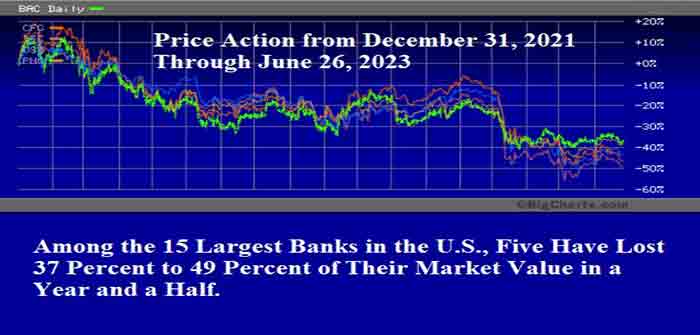
by Pam Martens and Russ Martens at Wall Street on Parade
Between March 10 and May 1 of this year, three of the largest bank failures in U.S. history occurred.
On March 10 the Federal Deposit Insurance Corporation (FDIC) seized Silicon Valley Bank after $42 billion in deposits had exited the bank the day prior with another $100 billion queued up to leave the next day – meaning it was possible for a federally-insured bank to lose 85 percent of its deposits in the span of 48 hours in the digital age. (For a closer look at what was going on at Silicon Valley Bank, see our report: Silicon Valley Bank Was a Wall Street IPO Pipeline in Drag as a Federally-Insured Bank; FHLB of San Francisco Was Quietly Bailing It Out.)
Two more bank failures followed in short order: Signature Bank on March 12 and First Republic Bank on May 1. Both banks were experiencing bank runs as a result of a loss of confidence by their customers.
First Republic Bank, Silicon Valley Bank, and Signature Bank were the second, third and fourth largest bank failures in U.S. history, respectively. (The largest failure was Washington Mutual during the financial crisis of 2008.)
The Fed’s answer to this crisis of confidence was to allow JPMorgan Chase, officially the riskiest U.S. bank with a string of felonies, to buy the failed First Republic Bank. At the time, First Republic was the 14th largest bank in the U.S. and JPMorgan Chase was the number 1 largest bank with $3.3 trillion in consolidated assets. (Is there any logic, whatsoever, in allowing the riskiest bank in the United States to get even larger? The only possible explanation is regulatory capture.)
So here we are today. The banking crisis has pretty much disappeared from the headlines but the smoldering remnants of the crisis are very much still with us.
The Federal Reserve has released…
Continue Reading